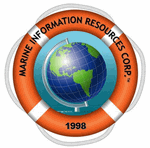Start Date
7-12-2017 2:15 PM
End Date
7-12-2017 3:00 PM
Description
In this paper we present the underlying theory and principal results from a new real-time data-assimilation system in which we integrate a dense network of Spotters. The sensor network was deployed as part of the ONR Innershelf DRI experiment during the period from September 2017 till November 2017. The array consists of 18 Spotters, deployed seaward of Point Sal (California) along the 20-, 50- and 100-meter depth contours (Fig. 1). Each of these buoys provides estimates of the complete frequency-directional spectrum every hour. The wave spectra and directional moments are assimilated in real-time using an efficient backward raytracing algorithm to reconstruct the details of the offshore boundary conditions, which is subsequently used to drive a regional wave model to produce a fully dataconstrained nowcast of the regional wave conditions. We will discuss the data-assimilation framework developed in this study and compare assimilated results with conventional model predictions forced with predictions from the global NOAA WAVEWATCH III model
Included in
Real-time wave assimilation using low-cost sensor arrays (Extended Abstract)
In this paper we present the underlying theory and principal results from a new real-time data-assimilation system in which we integrate a dense network of Spotters. The sensor network was deployed as part of the ONR Innershelf DRI experiment during the period from September 2017 till November 2017. The array consists of 18 Spotters, deployed seaward of Point Sal (California) along the 20-, 50- and 100-meter depth contours (Fig. 1). Each of these buoys provides estimates of the complete frequency-directional spectrum every hour. The wave spectra and directional moments are assimilated in real-time using an efficient backward raytracing algorithm to reconstruct the details of the offshore boundary conditions, which is subsequently used to drive a regional wave model to produce a fully dataconstrained nowcast of the regional wave conditions. We will discuss the data-assimilation framework developed in this study and compare assimilated results with conventional model predictions forced with predictions from the global NOAA WAVEWATCH III model




Comments
This work has been supported by the U.S. Office of Naval Research (Littoral Geosciences and Optics Program).